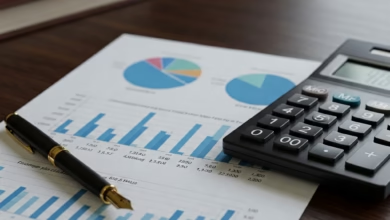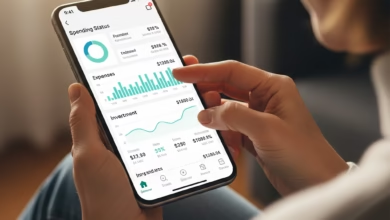How a $10,000 Investment in the S&P 500 Grew Over 20 Years
Understand how a $10,000 investment in the S&P 500 performed over 20 years

Investing can seem intimidating, but the truth is, a simple, long-term strategy can lead to significant returns. Let’s explore a powerful example of this principle by looking at how a $10,000 investment in the S&P 500 could have grown over a 20-year period. This isn’t about getting rich quick; it’s about the magic of compounding and the wisdom of staying invested.
The S&P 500: A Comprehensive Overview for the Modern Investor
Before we dive into the numbers, it’s crucial to have a deep understanding of what the S&P 500 represents. Officially known as the Standard & Poor’s 500, it is a stock market index that tracks the performance of 500 of the largest U.S. publicly traded companies by market capitalization. It is widely regarded as the best single gauge of large-cap U.S. equities and a proxy for the overall health of the American economy.
The S&P 500 is not a fund you can invest in directly. Instead, investors gain exposure to it through investment vehicles that track its performance, such as index funds and Exchange-Traded Funds (ETFs). By investing in one of these, you are essentially buying a small piece of all 500 companies in the index. This provides instant diversification, a key principle of smart investing.
Why The S&P 500 Is A Long-Term Investor’s Best Friend

The S&P 500’s appeal lies in its self-cleaning mechanism. As companies grow and become more valuable, they may be added to the index. Conversely, companies that shrink in value or face financial trouble are removed. This ensures the index remains a representation of the most powerful and profitable companies in the U.S. at any given time. This dynamic nature means that over the long term, you are always invested in a basket of winning businesses.
A Tale of Two Decades: The Historical Performance of the S&P 500
Let’s now turn our attention to the heart of this article: the numbers. While a hypothetical 10% average annual return is a common rule of thumb, it’s important to look at real historical data to understand the true nature of S&P 500 investing. A recent 20-year period (for example, from 2004 to 2024) saw an average annualized return of approximately 8.4% without accounting for inflation. However, including reinvested dividends and adjusting for inflation, the real average annualized return is closer to 5.7%.
This data reveals two critical insights:
- The importance of dividends: Dividends, which are a portion of a company’s earnings paid out to shareholders, contribute significantly to total returns. Reinvesting these dividends, rather than taking them as cash, supercharges your growth through compounding.
- The erosion of inflation: Inflation reduces the purchasing power of your money. A “real” return (inflation-adjusted) gives a more accurate picture of how your wealth actually increased over time.
The Power of Compounding: A Deep Dive into the Growth of $10,000

Let’s use the more conservative historical data, including dividends, to paint a more realistic picture. If you had invested $10,000 in an S&P 500 index fund 20 years ago and reinvested all dividends, your investment would have grown significantly. Based on historical data, that initial $10,000 could have grown to over $50,000 to $60,000, depending on the exact 20-year period chosen. This shows that even with a lower-than-average return and market volatility, the power of compounding over two decades is undeniable.
The key to this exponential growth is that your investment gains begin to earn their own returns. It’s a snowball effect that is slow at first, but accelerates dramatically over time.
The Investor’s Mindset: Navigating Volatility and Avoiding Panic
The journey of a 20-year investment is not a smooth, upward line. It is a rollercoaster of market booms and busts. The 2008 financial crisis, the 2000 dot-com bubble, and the 2020 COVID-19 pandemic all represent periods of significant market downturn.
This is where the psychology of investing comes into play. The number one mistake many investors make is panic selling. When the market drops, fear and loss aversion take over, prompting people to sell their investments at a loss. This behavior, often called “buying high and selling low,” is the opposite of a successful long-term strategy. The average investor often underperforms the market precisely because of this emotional decision-making.
A successful long-term investor understands that market volatility is a feature, not a bug, of the system. They view downturns not as a reason to sell, but as an opportunity to buy more at a discount. By staying the course and sticking to a pre-defined investment plan, you can weather the storms and reap the benefits of the eventual recovery.
The Vehicle Matters: Choosing Your S&P 500 Investment

As we’ve established, you can’t buy the index directly. You need an investment vehicle. The two most common options are:
- Mutual Funds: These are professionally managed funds that pool money from many investors to buy stocks, bonds, or other assets. Many are actively managed, but there are also passively managed index mutual funds that track the S&P 500. They are priced once per day after the market closes.
- Exchange-Traded Funds (ETFs): ETFs are also baskets of securities, but they trade on an exchange just like a stock. This means you can buy and sell them throughout the trading day. For S&P 500 exposure, popular ETFs like SPY, IVV, and VOO are incredibly popular due to their low fees and high liquidity.
For a new investor, ETFs often have an edge due to their generally lower expense ratios (management fees) and tax efficiency. They offer the same broad diversification as a mutual fund but with the added flexibility of trading like a stock.
S&P 500 vs. Other Asset Classes: A Comparison
To put the S&P 500’s performance into perspective, it’s useful to compare it with other common asset classes over the same long-term horizon.
- Bonds: Bonds are generally considered a safer, more stable investment. They provide fixed income but typically offer much lower returns than stocks, especially when adjusted for inflation. A diversified portfolio often includes both stocks and bonds to balance risk and reward.
- Real Estate: Real estate can be an excellent inflation hedge, as property values and rental income tend to rise with inflation. However, it can be illiquid and requires significant capital and management. Historical data shows that while real estate can perform well, the S&P 500 has often outperformed it over multiple long-term periods.
The S&P 500’s high liquidity, low cost of entry, and historical returns make it an attractive option, even when compared to seemingly more tangible assets like real estate.
The Role of Reinvesting Dividends: A Deeper Look

Let’s focus more on the power of dividends. Historically, dividends have made up a significant portion of the total return of the S&P 500. For instance, over a multi-decade period, dividends can account for 30-40% of an investor’s total return.
When a company in the S&P 500 pays a dividend, you can choose to take the cash or reinvest it. Reinvesting means that the dividend money is automatically used to buy more shares of the fund. This process is a classic example of compounding, as your new shares then also begin to earn dividends and increase in value. Over 20 years, this seemingly small act of reinvestment can add tens of thousands of dollars to your final portfolio value. It’s a passive but highly effective way to accelerate your wealth accumulation.
Starting Small: The Power of Dollar-Cost Averaging
For those who don’t have a lump sum of $10,000 to invest at once, there’s another powerful strategy called dollar-cost averaging. This involves investing a fixed amount of money at regular intervals, regardless of market conditions. For example, investing $100 every month.
The beauty of this strategy is that it removes emotion from the investment process. When the market is down, your fixed investment buys more shares at a lower price. When the market is up, it buys fewer shares. Over the long run, this averages out your cost per share and can lead to excellent returns, especially for a new investor just starting their journey. This consistent, disciplined approach is the perfect complement to a long-term “buy and hold” strategy with the S&P 500.
Final Thoughts: Your Roadmap to Financial Freedom
The story of a $10,000 investment in the S&P 500 is more than just a case study in market performance. It’s a powerful lesson in financial discipline, patience, and the incredible potential of long-term investing. The key takeaways for any investor, new or experienced, remain the same:
- Start Early: Time is your most valuable asset. The sooner you start, the longer compounding has to work its magic.
- Keep it Simple: Don’t try to outsmart the market. A low-cost S&P 500 index fund or ETF provides all the diversification you need.
- Stay Invested: Ignore the short-term noise and focus on your long-term goals. Market downturns are not a sign to sell, but a test of your resolve.
- Reinvest Your Dividends: Make sure your money is always working for you.
By embracing these principles, you can turn a modest initial investment into a significant nest egg, securing your financial future one patient step at a time. The path to wealth is not paved with get-rich-quick schemes, but with the steady, reliable growth of a well-chosen, long-term investment.





